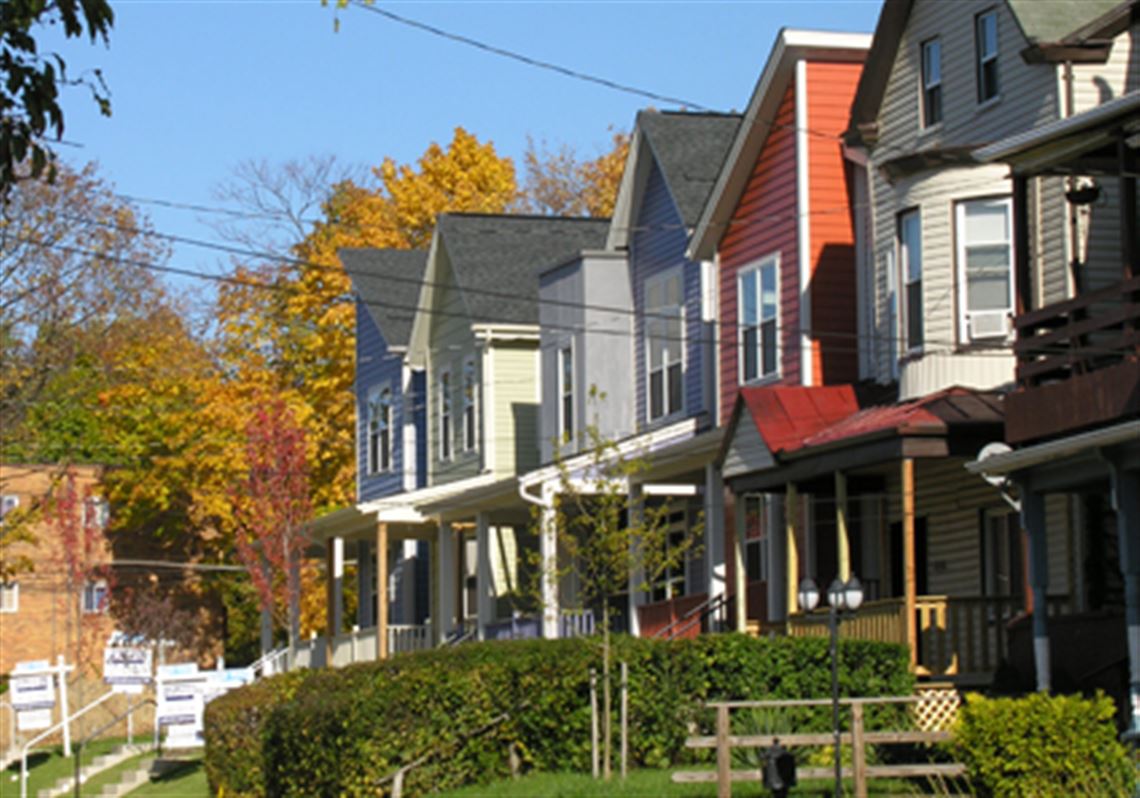A map of East Liberty in 2008 shows Negley Avenue running down the length of a curious red blotch between Penn Avenue and East Liberty Boulevard.
By 2012, the red blotch had dimmed to yellow. The change signified a 49 percent drop in the incidence of crime.
The blotch had covered much of the old residential neighborhood, including Hays, North St. Clair, Mellon and Euclid streets. In the mid-2000s, Eric Jester, then the housing development manager for East Liberty Development Inc., said his and nearby streets were “a steady drumbeat of nonsense. Not just gunfire but street fights, people screaming, hookers propositioning your dinner guests.” He said an identifiable number of properties had reduced quality of life to “an existential threat.”
“We called the police, but as soon as the police left it started up again,” he said. “We tried code enforcement, we tried yelling, we tried shaming.
“We finally decided it’s probably better if we owned the properties.”
The result of ELDI’s strategic purchase of 200 units from slumlords between 2008 and 2012 is the subject of a 23-page report, released recently by the data analysis firm Numeritics, that reframes East Liberty’s narrative of transformation.
For years, it has been built on the commercial investments that poured into the neighborhood through the 2000s — Home Depot in 2000, Whole Foods in 2002 and, more recently, Target and the build-out of Eastside.
But nobody sleeps at Whole Foods.
“You can stack organic arugula as high as you want, but that doesn’t make a neighborhood safe,” said Mr. Jester, who left ELDI in 2014 to head his own company, New Burgh Real Estate.
Numeritics, based in East Liberty, provides previous research, data and correlations, academic theories, graphs, charts and citations that describe the result of what ELDI called “the slumlord buy-out program,” Mr. Jester said.
Through the 2000s, ELDI was buying, renovating and replacing properties for mixed-income buyers, but it intensified its efforts in 2008, going after property owners who allowed criminal behavior as long as tenants didn’t complain about lax maintenance.
ELDI’s acquisition of both large and small apartment buildings led to renovations and the hiring of effective property managers and off-duty police officers. At the same time, ELDI kept the same racial composition and low rents, Numeritics reported.
As it happens, the nonprofit had acquired 3 percent of the neighborhood’s residential rental units, unwittingly hitting the percentage identified in hot-spot theory, which says that 3 percent of locations are responsible for 50 percent of police calls, said Numeritics’ research scientist Victoria Hill, a Carnegie Mellon University graduate
Numeritics’ lead economist Tayo Fabusuyi, who also studied at CMU, said a 49 percent drop in crime between 2008 and 2012 within the streets covered by the red blotch was in direct correlation to ELDI’s acquisitions.
“What was really novel was the use of real estate to address crime,” he said.
One of the acquisitions, Mellon’s Orchard Apartments, was the source of 53 arrests in 2008. In 2012, there were 13.
In this case, as in others, Ms. Hill said, effective property management “has made the difference.”
“Sometime in 2013,” Mr. Jester said, “I was crawling into bed on a hot night and had the windows open. It was so quiet. I asked my wife, ‘When was the last time we called 911?’ ”
Neither could remember.
To find out if ELDI’s strategy had played a part in the change, he collected city crime data and called Carnegie Mellon University, where a graduate student created the “heat maps” that showed where crime was significant enough to register.
In both the 2008 and 2012 maps, a red circle is centered over East Liberty’s business district, just as it is over Shadyside’s Walnut Street. Business districts in all neighborhoods are typically where crime is most significant, most relating to theft.
Zone 5 Commander Jason Lando said he is too new to his job to speak to ELDI’s efforts then, “but I definitely have noticed over the last couple years that area [under the red blotch] has quieted down considerably. I was at a meeting the other day in Garfield and was pleasantly astonished at how Garfield had significantly quieted down, too.
“There is a tremendous amount of credit that goes to community groups” in addressing crime, he said.
ELDI’s role in ensuring mixed-income rentals and home sales throughout the neighborhood have contributed to rising property values, as other developers flock to the market. But there are still many affordable rentals, said Skip Schwab, ELDI’s deputy director. The nonprofit has used state low-income tax credits for equity to afford renovating derelict buildings, he said.
“The neighborhood is now a much more attractive place to live, and so demand for affordable has increased,” he said, adding that whether you live in a market rate house or an affordable apartment, “safety is nonnegotiable.”
Numeritics has evaluated and interpreted data for organizations, companies and non-profits on everything from the effects of after-school programs to the efficacy of a parking app. It also helps organizations build data skills.
Mr. Jester said Numeritics’ findings may be of particular interest in Rust Belt cities, where population pressure is not driving prices as high as it is on the East Coast, making it possible to replicate ELDI’s strategy.
The entire report is embebbed in a synopsis of the project at eastliberty.org.
Diana Nelson Jones: djones@post-gazette.com or 412-263-1626.
First Published: March 29, 2015, 4:00 a.m.
Updated: March 30, 2015, 1:53 a.m.






















